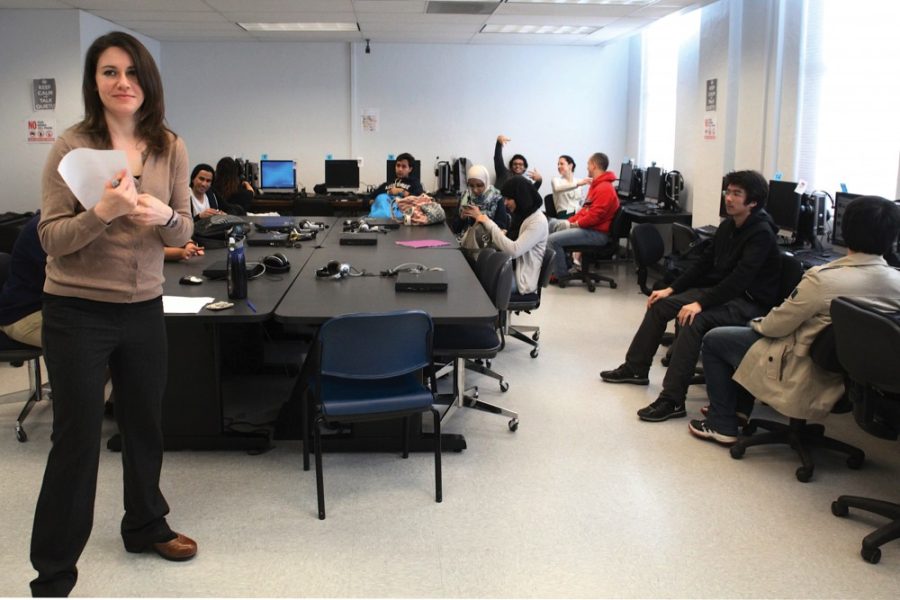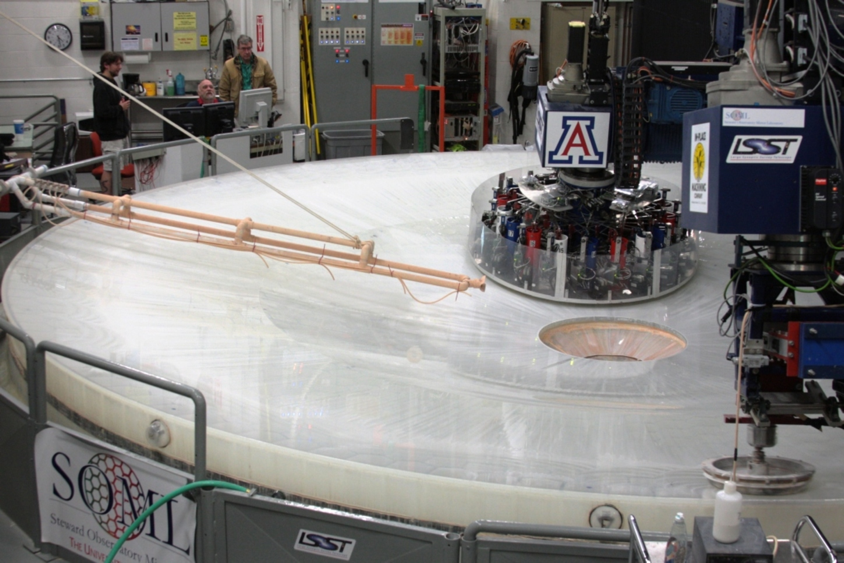With a population that represents nearly 140 countries, teachers and students at the UA have to find effective ways to communicate across language barriers.
For the past year and a half, Marlena Goodsitt has been an adjunct lecturer in the Intensive English Program at the Center for English as a Second Language. Students in IEP practice subjects in English like oral communication, writing, grammar and reading. Goodsitt said IEP is required of most international students who do not receive the minimum required score on the Test of English as a Foreign Language.
Goodsitt said she enjoys working with students at CESL.
“They’re very motivated,” she said. “I’ve had some of the best teaching experiences there.”
Davi Fortes, an international student from Angola, will be a human resources freshman in the fall of 2014. He is currently enrolled in the IEP at CESL on scholarship and meets with his IEP class five mornings a week.
Fortes said he does not yet feel entirely ready to start next semester, as he still occasionally experiences issues communicating with his teachers.
This problem exists not only for students from countries where English is not the primary language spoken, but also for English-speaking students with TAs from those countries.
Samuel Luk teaches a lab for Physics 141 and has been working as a TA at the UA for a year and a half. He earned degrees in philosophy and physics from the University of Hong Kong and is currently earning a Ph.D. in physics.
Luk said he likes teaching, and has three-and-a-half years of experience, but he still occasionally encounters minor language barriers.
“Because English is my second language, sometimes students do not understand me,” Luk said.
Ricky Maciel, an astronomy and physics sophomore, had Luk as a TA last semester. According to Maciel, any communication issues were resolved quickly.
“I just raised my hand and asked him personally,” Maciel said.
If communication issues persist, Luk turns to his students.
“I have them work with their partner to try to work out the problem,” Luk said. “If they still do not understand, I move them to another group.”
Britain Eakin, a graduate student in Middle Eastern studies, worked as a TA for Middle Eastern Humanities in the fall of 2013. Most of the work in the class was in the form of essays, and she said
she sometimes experienced language barriers with her students.
“It’s an interesting issue, and one that should be handled delicately,” Eakin said.
Fahd Alalwi has a unique perspective on language barriers, as he is from Saudi Arabia and is earning a Ph.D. in second language acquisition and teaching at the UA. He worked as an instructional assistant at CESL in the fall of 2012.
“The language barrier is the thing that we are working on as ESL teachers,” he said. “This problem was part of the solution itself. This kind of facilitated the process for both parties — for the teacher and for the student.”
Alalwi said he enjoyed teaching outside of his home country of Saudi Arabia to students with a variety of backgrounds.
“When I taught in my country, it was all homogeneous,” Alalwi said. “Having a group from different nationalities, from different countries, is enriching.”









